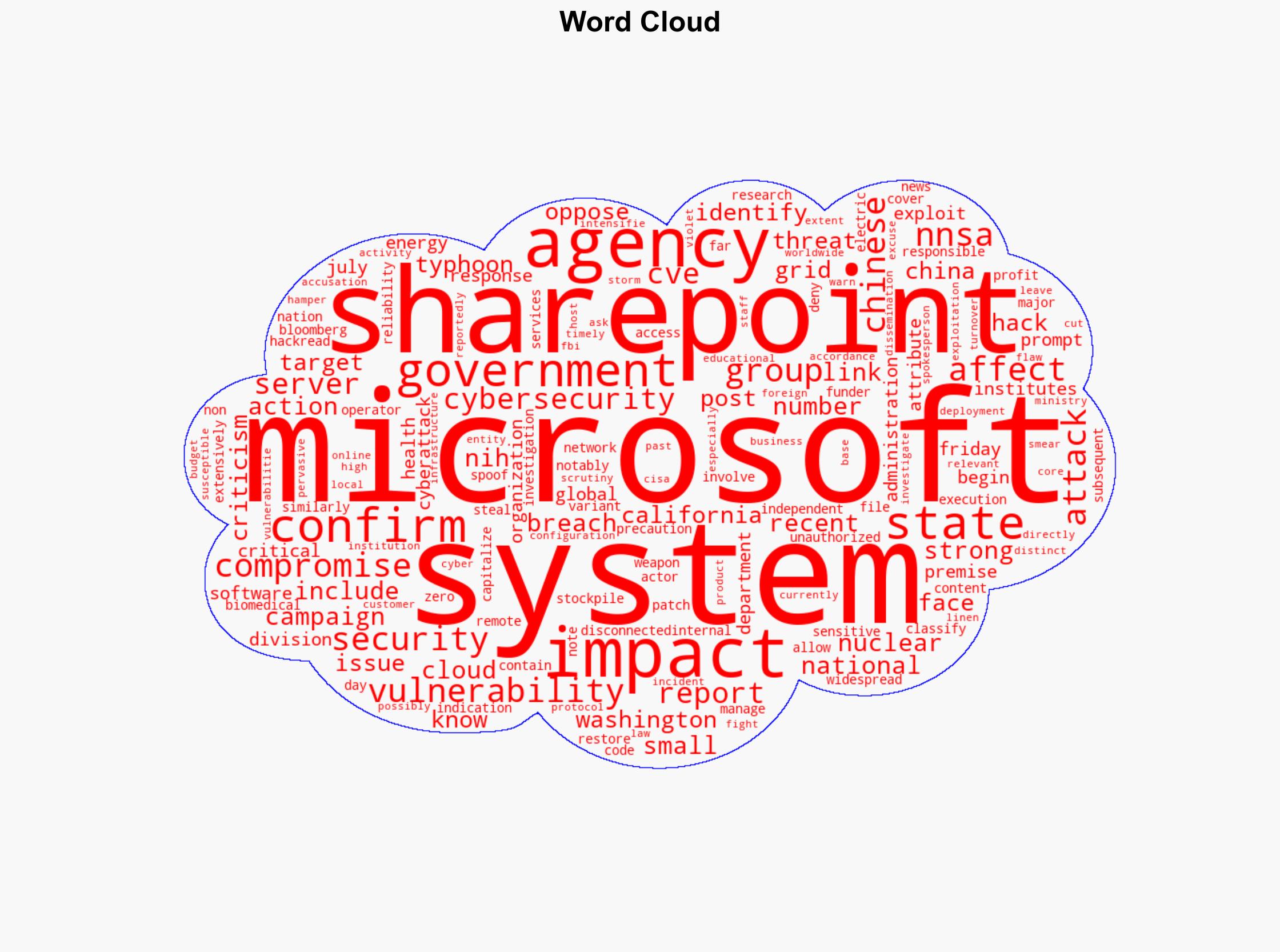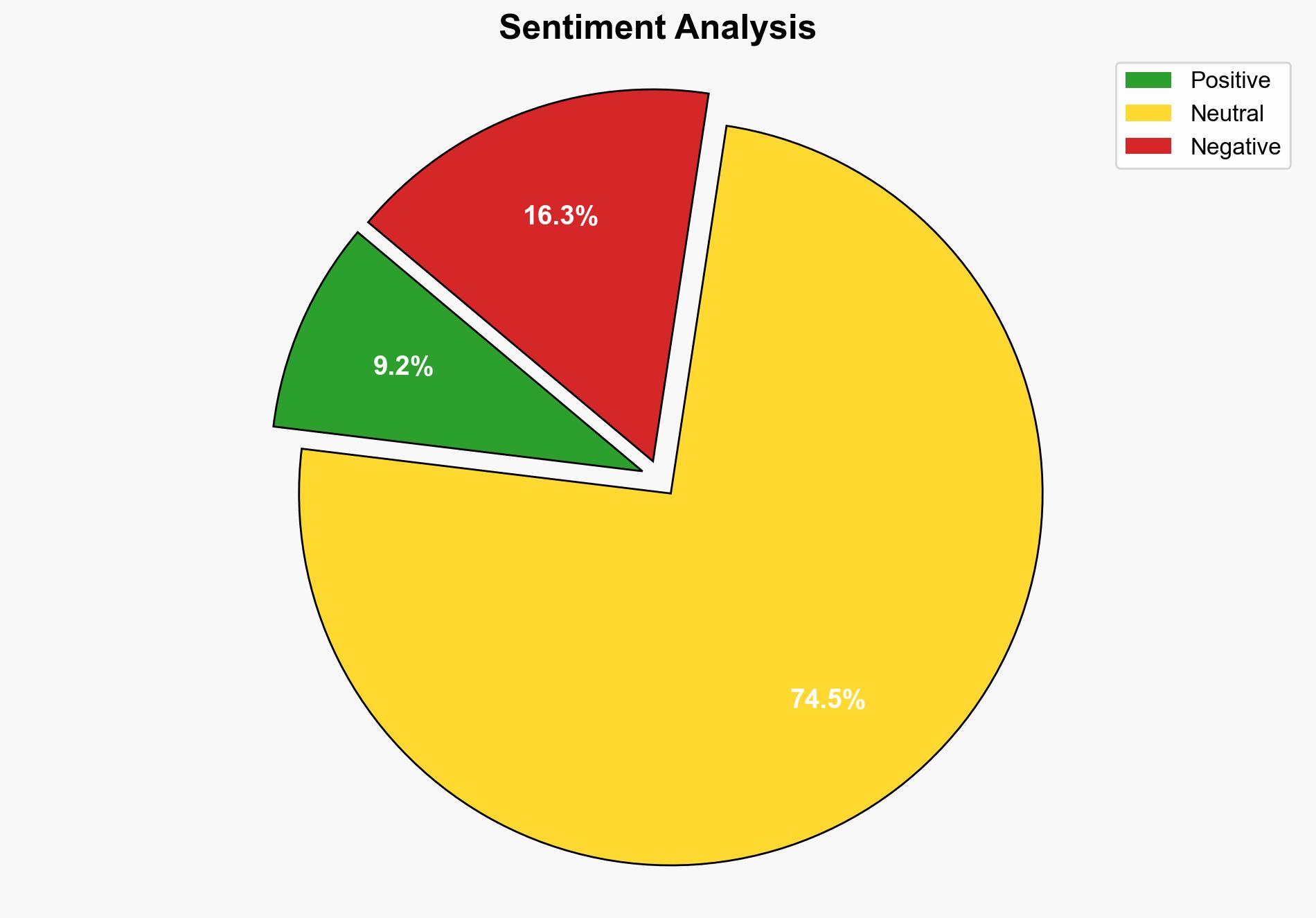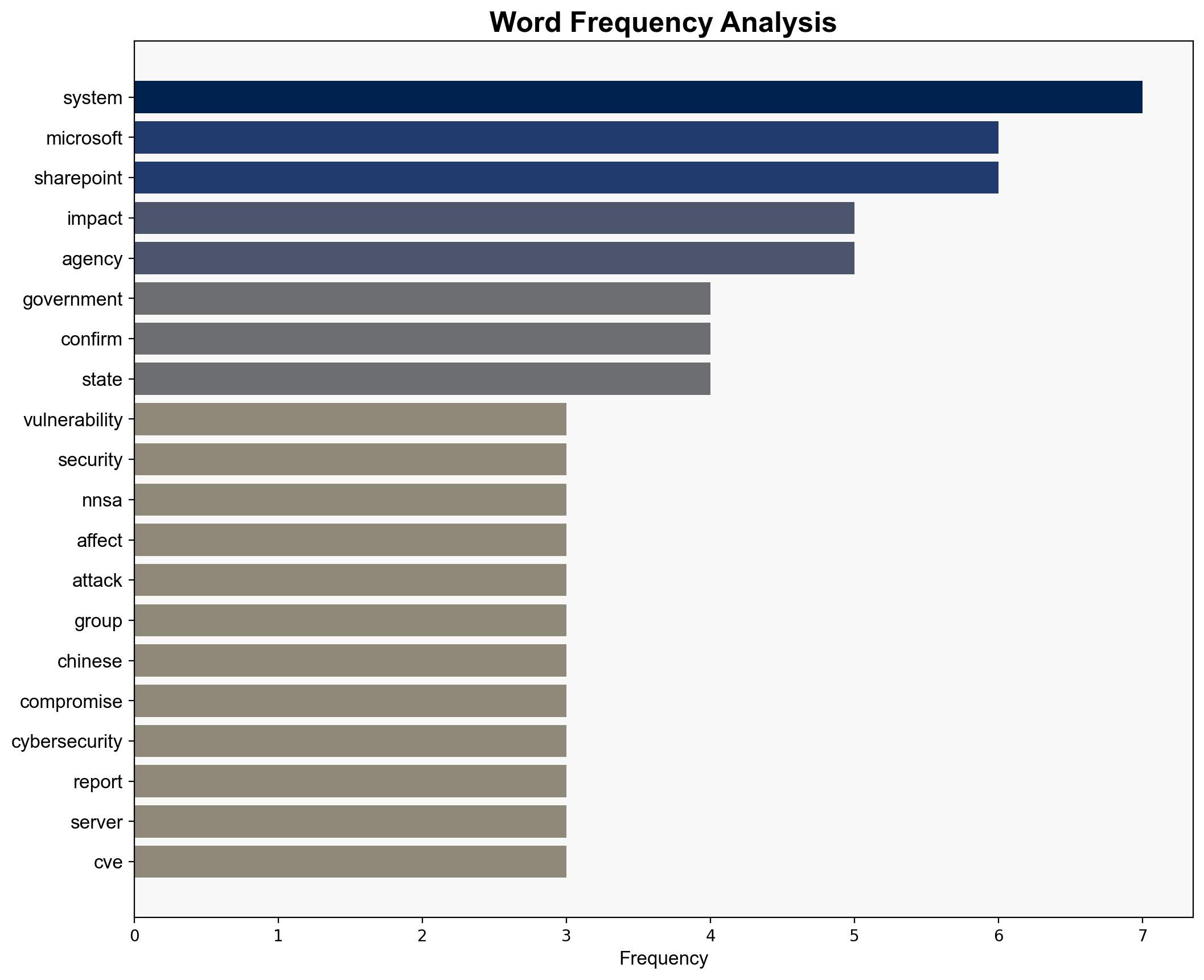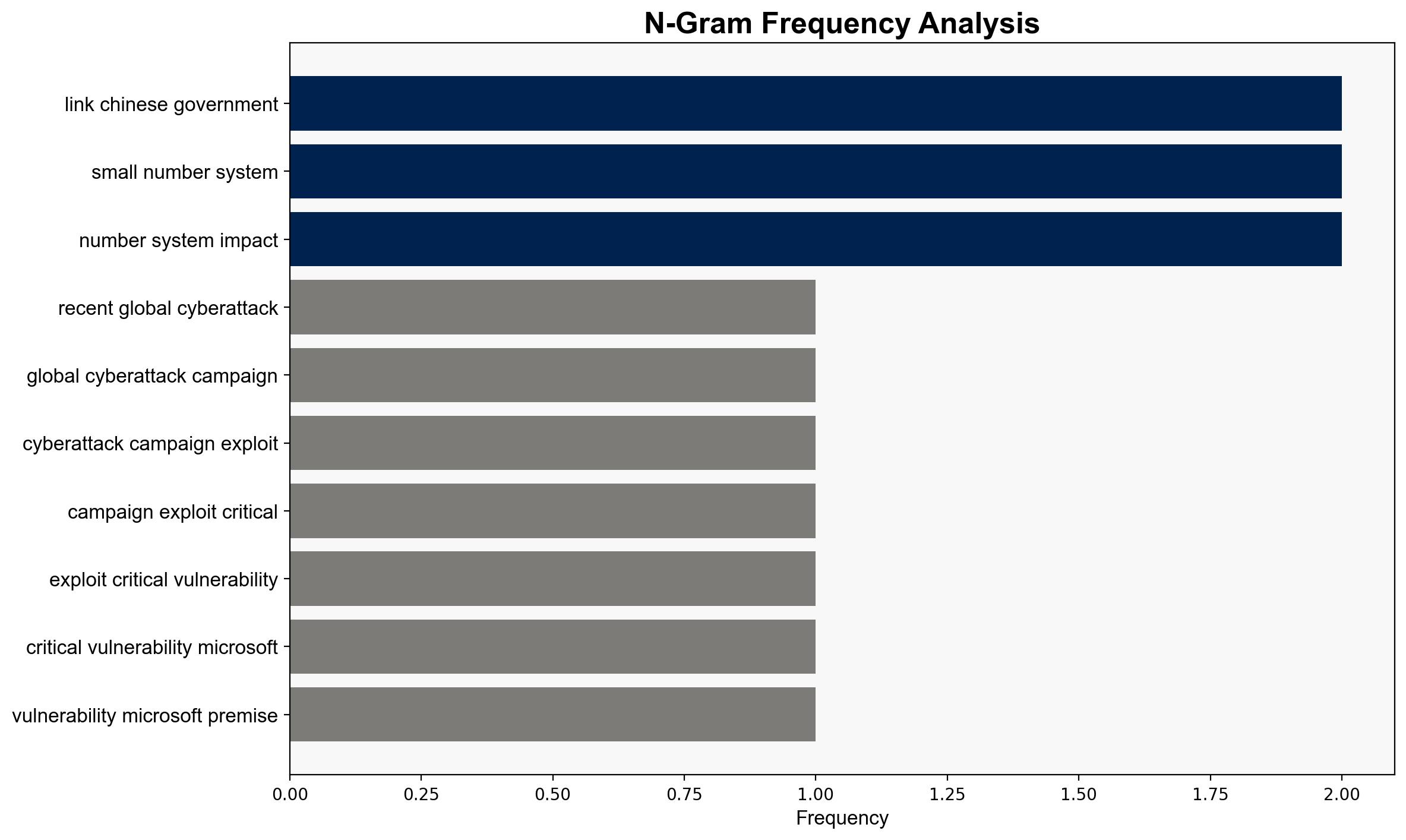National Nuclear Security Administration Systems Breached in SharePoint Cyberattack – HackRead
Published on: 2025-07-24
Intelligence Report: National Nuclear Security Administration Systems Breached in SharePoint Cyberattack – HackRead
1. BLUF (Bottom Line Up Front)
The cyberattack on the National Nuclear Security Administration (NNSA) and other entities, exploiting a Microsoft SharePoint vulnerability, is likely linked to Chinese state-sponsored groups. This assessment is based on the attribution by Microsoft and the targeting pattern. The strategic recommendation is to enhance cybersecurity measures, particularly focusing on patch management and threat intelligence sharing. Confidence Level: Moderate.
2. Competing Hypotheses
Hypothesis 1: The cyberattack was conducted by Chinese state-sponsored groups, as suggested by Microsoft, aiming to gather intelligence on U.S. nuclear capabilities and other sensitive information.
Hypothesis 2: The attack was carried out by independent cybercriminals or a non-state actor using Chinese infrastructure or methods to mislead attribution efforts.
3. Key Assumptions and Red Flags
Assumptions:
– Hypothesis 1 assumes that the attribution by Microsoft is accurate and that the targeting aligns with Chinese strategic interests.
– Hypothesis 2 assumes that the attackers have the capability to mimic Chinese cyber operations effectively.
Red Flags:
– The limited number of systems reportedly impacted raises questions about the attack’s scope and intent.
– The Chinese foreign ministry’s denial could be genuine or a standard diplomatic response.
4. Implications and Strategic Risks
The breach of NNSA systems poses significant national security risks, potentially compromising sensitive nuclear information. Escalation could occur if further evidence directly implicates Chinese state actors, leading to heightened geopolitical tensions. Economically, continued vulnerabilities in Microsoft products could undermine trust in U.S. technology firms.
5. Recommendations and Outlook
- Enhance patch management protocols and ensure rapid deployment of security updates.
- Increase collaboration between government agencies and private sector for threat intelligence sharing.
- Scenario Projections:
- Best Case: Quick containment and patching prevent further breaches, and diplomatic channels resolve tensions.
- Worst Case: Additional breaches occur, leading to significant data loss and geopolitical conflict.
- Most Likely: Ongoing cyber threats persist, requiring continuous vigilance and adaptation of cybersecurity strategies.
6. Key Individuals and Entities
– Microsoft (attribution of the attack)
– National Nuclear Security Administration (targeted entity)
– Chinese Foreign Ministry (denial of involvement)
7. Thematic Tags
national security threats, cybersecurity, counter-terrorism, regional focus





